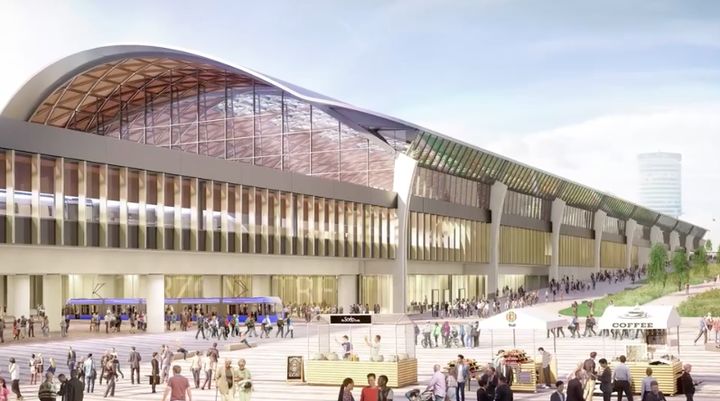
It is set to be the first new intercity railway station built in Britain since the 19th century at a cost of millions of pounds and much controversy.
But that hasn’t stopped one MP publicly denouncing Birmingham’s proposed new high-speed rail network (HS2) station as little more than “a railway shed.”
Designs for the station were published with great fanfare this morning with brightly coloured computer-generated images revealing the Curzon Street station in Birmingham city centre and Interchange station in Solihull.
Labour MP Liam Byrne was distinctly unimpressed by the design taking to Twitter to lament: “Hmmm. I hope the designs look better closer up ... looks like a pretty traditional railway shed from this view....”
Byrne also said he believed a station should include a science museum adding: “Personally I’ll be campaigning for the station to include the greatest science museum in Britain. Passengers should know they’re arriving in the home of the industrial revolution!”
His verdict was a far cry from the gushing comments from people involved in the £57billion rail project which has seen public demonstrations, procurement scandals and ballooning costs.

Nusrat Ghani, the Government Minister responsible for HS2, said: “Unveiling the station designs for Curzon Street and the Solihull Interchange is a milestone moment.”
And Neven Sidor, a lead architect on the Curzon Street design, said: “HS2’s new Curzon Street station is inspired by the best station design of the past, inspired by Britain’s pioneering railway and industrial heritage reimagined for the 21st century.
“The elegant sleek low arch which will make the station instantly recognisable in the surrounding area and its warm coffered soffit will join the growing list of modern Birmingham icons.”

Kim Quazi, a lead architect for the Interchange station, was equally proud of his work.
He said: “The station roof has been designed to fit in with the surrounding landscape, and to optimise natural daylight using an integrated, efficient structural form and rainwater management system.”